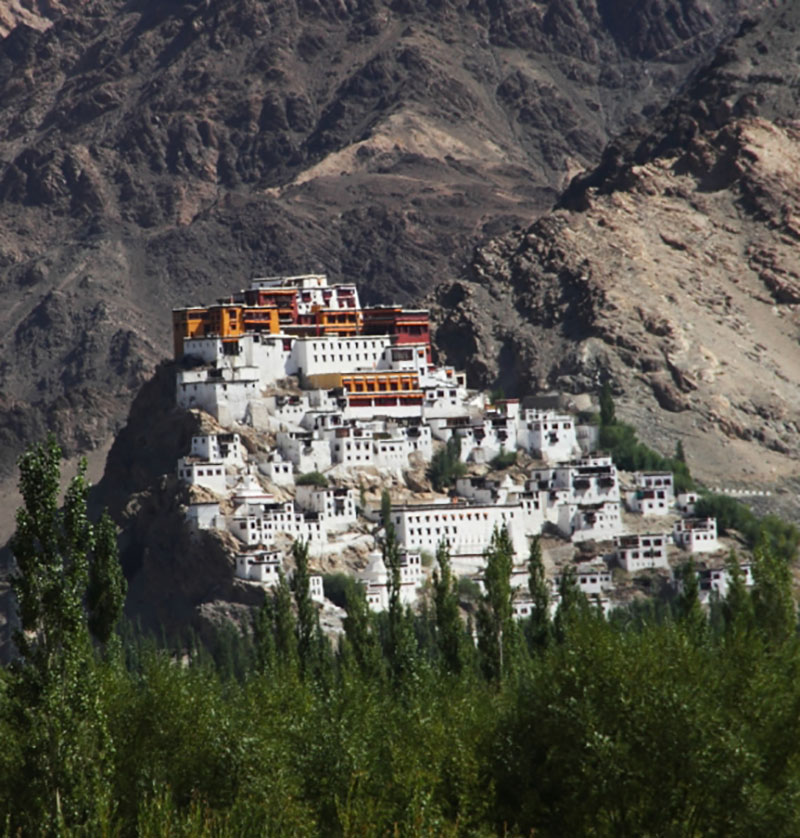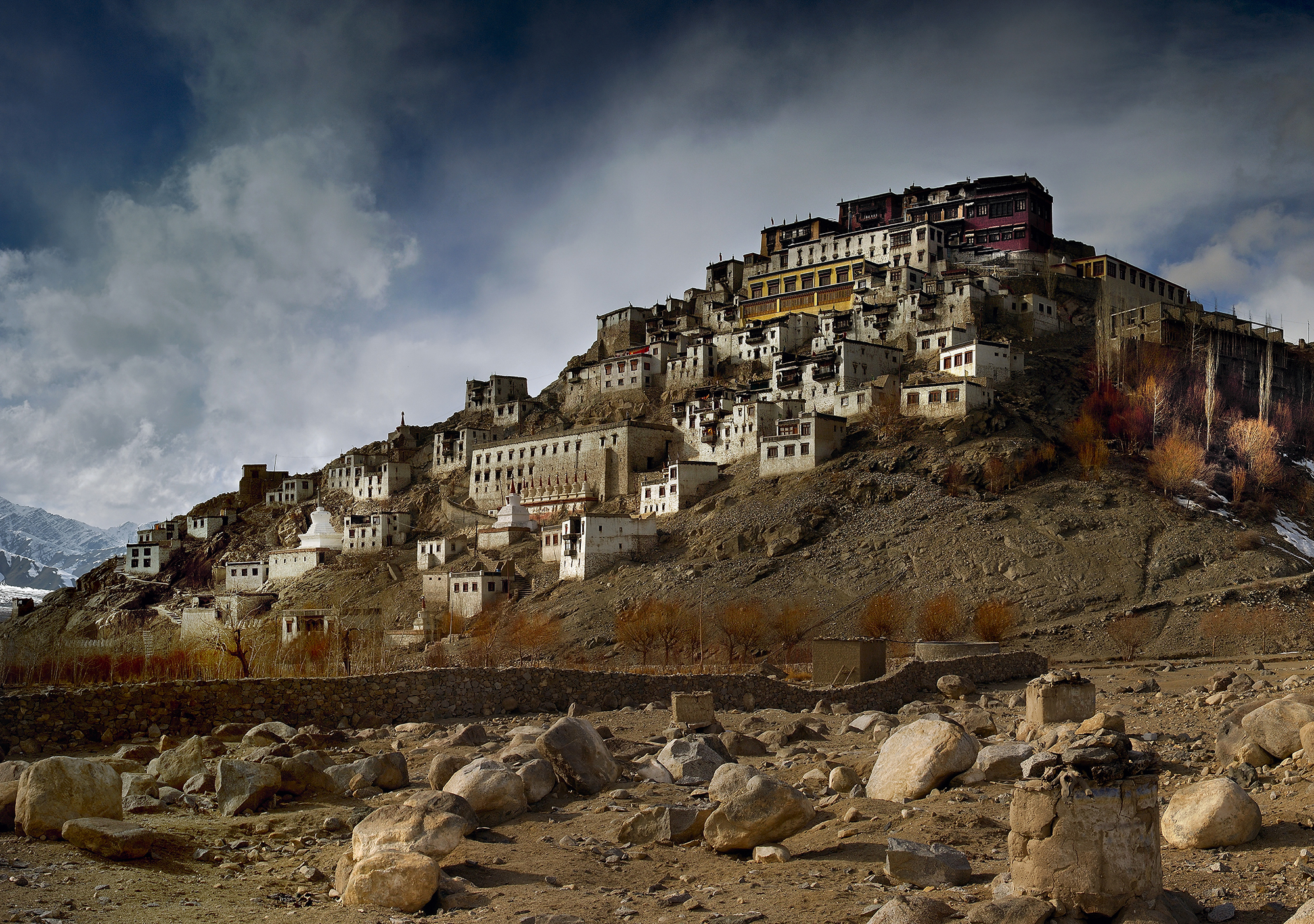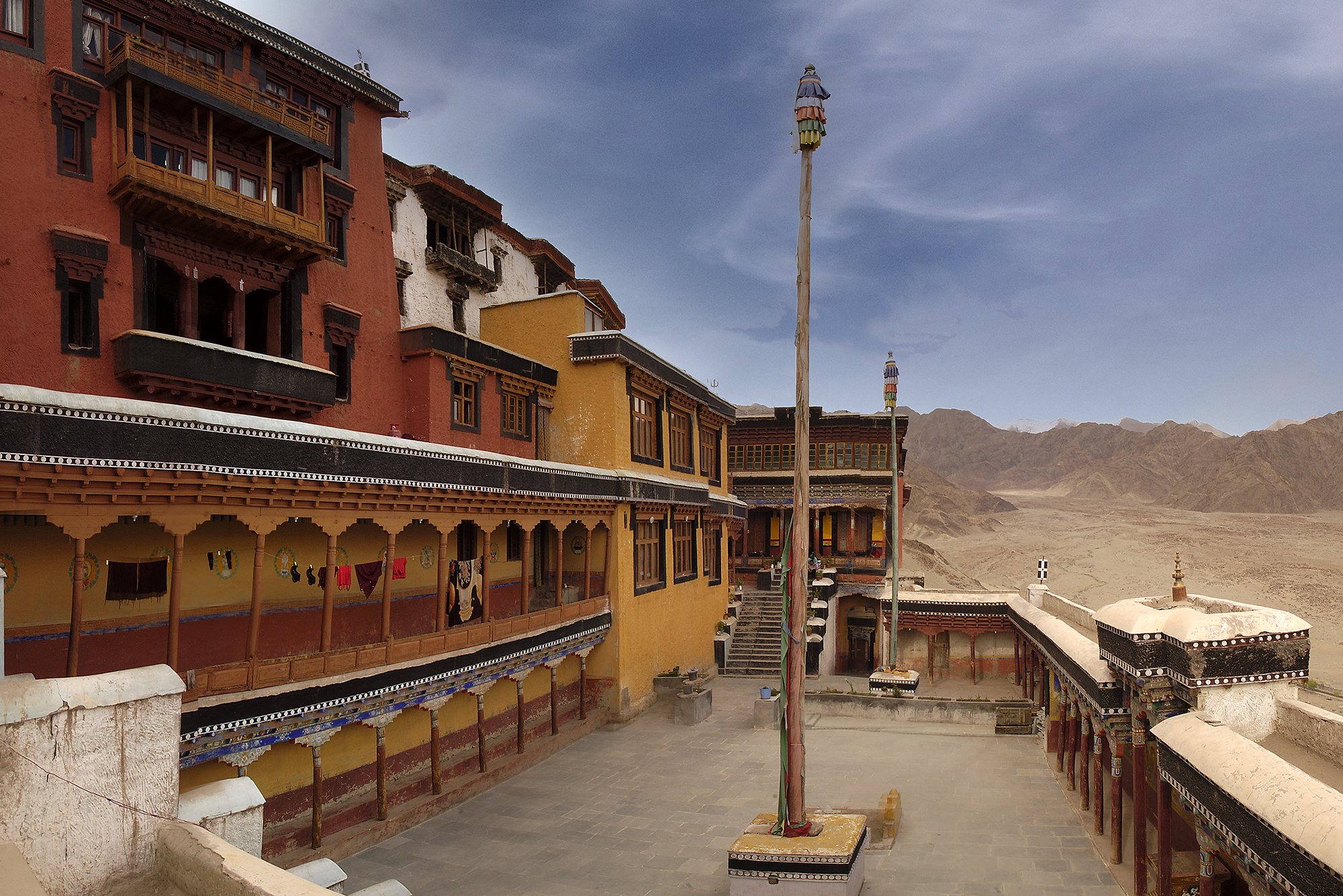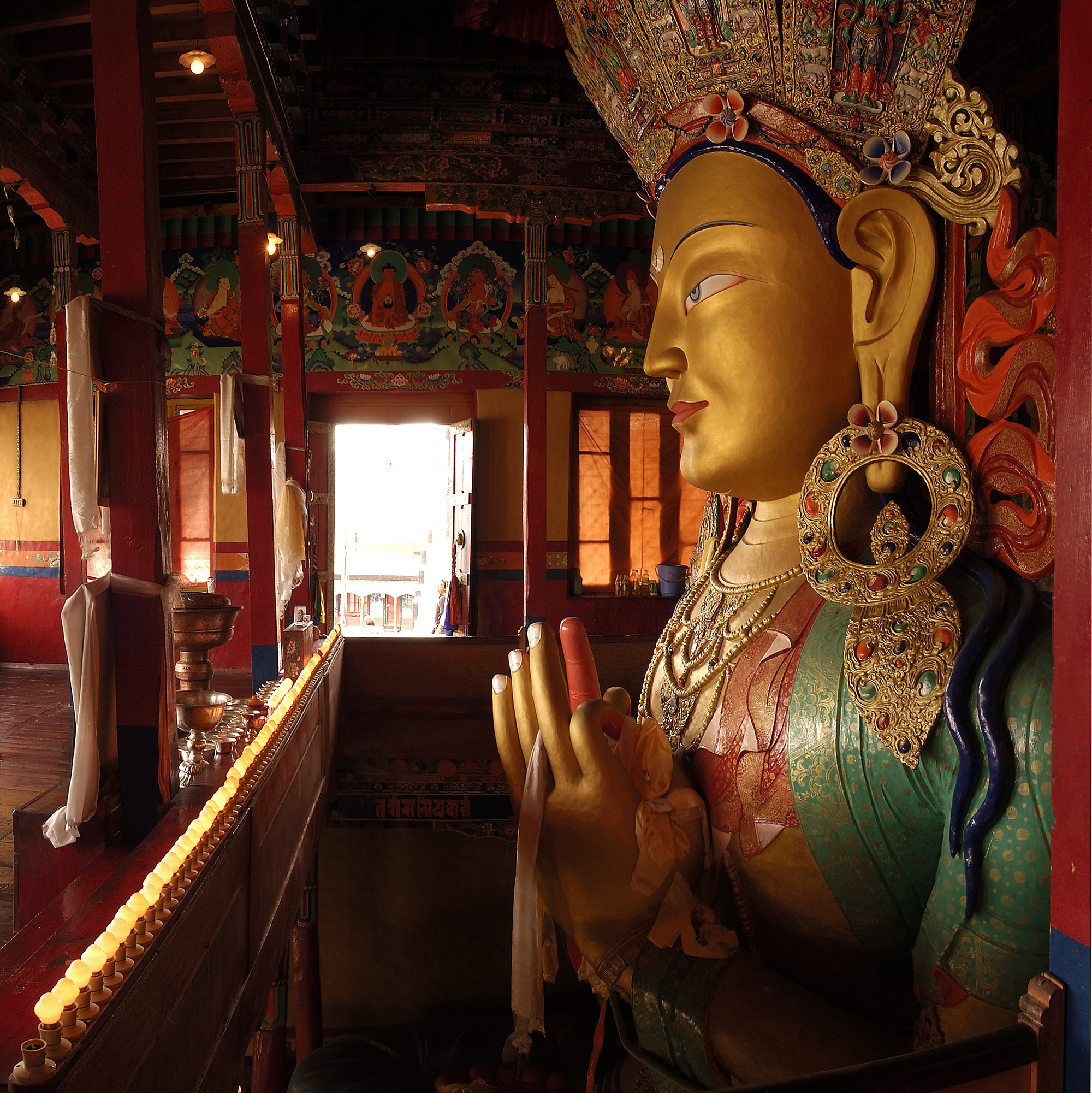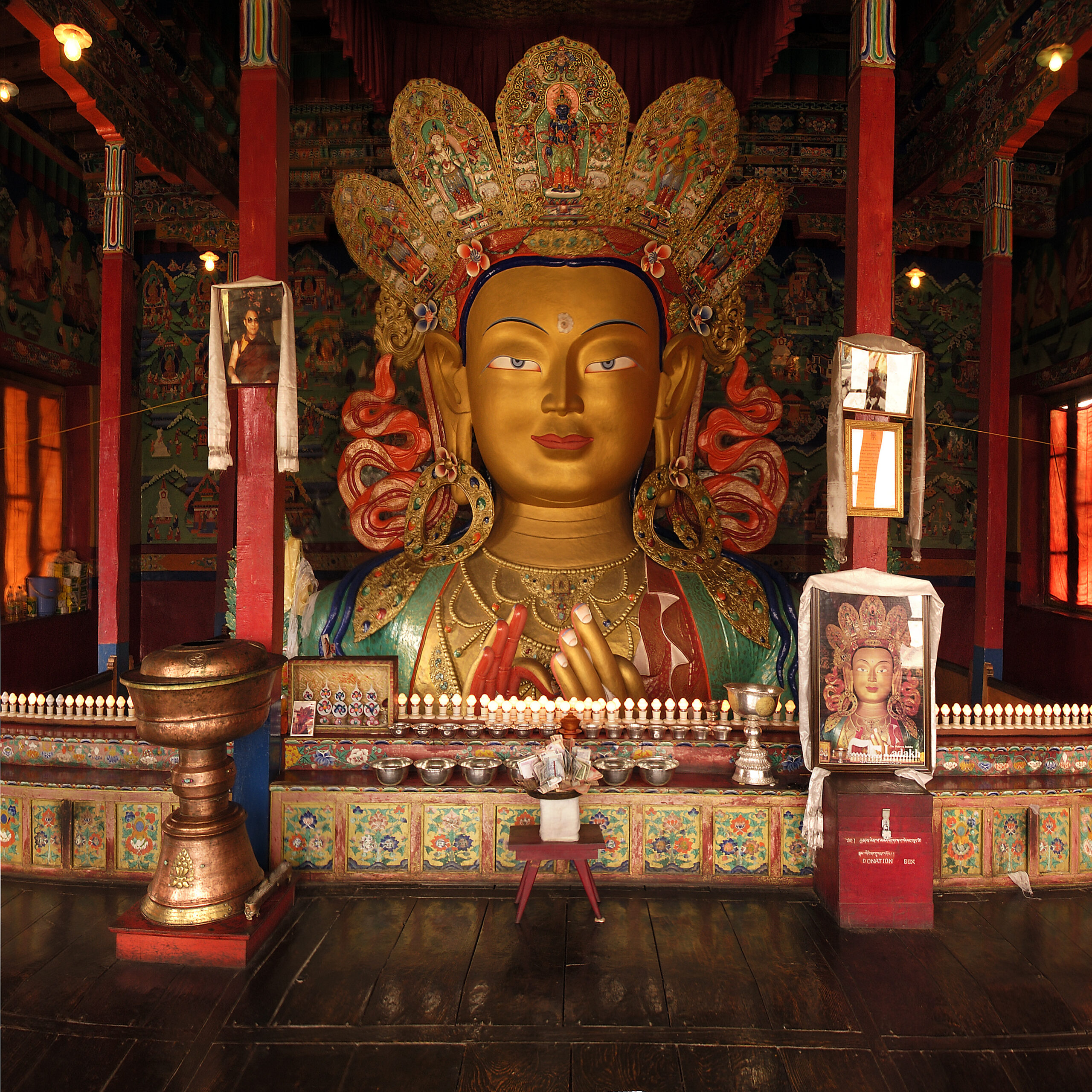ARTICLE
Thiksey Monastery
The Dukhang — painted ochre and orange — can be accessed from the courtyard by a flight of stairs. Its external facade is characterised by wooden loggias, while its interiors are distinguished by several carved wooden pillars that create a gallery-like space. The walls of the Dukhang are painted with murals, and thangkas hang from the edges of the ceiling next to one another, lining the upper portion of the structure. Long wooden benches line the walls, and are reserved for monks. Two cone-like painted wooden pedestals that hold two large Shakyamuni sculptures. The Dukhang has a small antechamber, known as the tsangkhang,with painted walls, and housing sculptures of Padmasambhava, Maitreya, and Shakyamuni.
The Gonkhang, with a red exterior, is a three storey located next to the Dukhang, and is believed to be amongst the oldest buildings in the complex. It houses fierce protector deities.
Other notable structures in the complex are the Tara Lhakhang, dedicated to Tara, the Lhamo Khang, dedicated to Palden Lhamo, and the Chamba Lhakhang. The Lhamo Khang houses a number of important manuscripts, as well as the deity, and access to it is restricted. The Chamba Lhakhang is a three-storey rectangular building. It was built in 1979–80 and houses an imposing sculpture of Maitreya, also known as Chamba, created by the Ladakhi artist Nawang Tsering.
Despite their varying functions, the structures at Thiksey have a visually unified exterior. Whilst the more important structures at the top of the hill are painted in shades of yellow or red, the walls of the other buildings are painted white, with thick black lines demarcating the windows and roofs. The buildings in the complex are made primarily of stone, mud bricks, clay and timber. Because of its colour scheme and layout, the monastery is often likened to the Potala Palace in Lhasa, Tibet.
The use of cement and other modern materials has been limited to the maintenance and repair work carried out over the last few decades. As of writing, the renovations carried out within the monastery include the construction of a new kitchen and dining hall for monks, the demolition of an old structure in the central courtyard to make space for a new temple, and the paving of the central courtyard with granite.
The Archaeological Survey of India (ASI), which lists the Thiksey Monastery as a Monument of National Importance, is responsible for its conservation. However, the ASI’s approach to conservation in Ladakh has faced criticism from experts as well as the monks residing in monasteries such as Thiksey, who have expressed concern regarding the poor quality of the repair work undertaken by the agency.
Bibliography
Dhar, Sanjay. “Thiksey.” Sahapedia, November 15, 2018. Accessed October 17, 2022. https://www.sahapedia.org/thiksey.
Di Mattia, Marialaura. “A Historical Profile of Ladakhi Religious Architecture.” The Tibet Journal 21, no. 2 (1996): 90–127. Accessed October 10, 2022. http://www.jstor.org/stable/43302279.
Dogra, Chander Suta. “The Broken Hemisphere.” Outlook India, February 05, 2022. Accessed October 23, 2022. https://www.outlookindia.com/magazine/story/the-broken-hemisphere/
Khosla, Romi. Buddhist Monasteries of the Western Himalayas. Kathmandu: Ratna Pustak Bhandar, 1979.
Sharma, Janhwij. Ladakh: Architectural Heritage. New Delhi: Indian National Trust for Art and Cultural Heritage in association with Har-Anand Publications, 2003.
Snellgrove, David L, and Tadeusz Skorupski. The Cultural Heritage of Ladakh, Volume 1: Central Ladakh. Warminster: Aris & Phillips Ltd, 1977.




